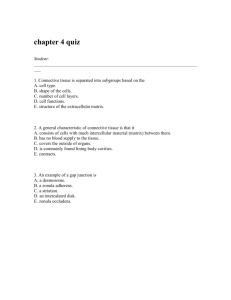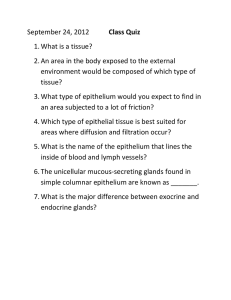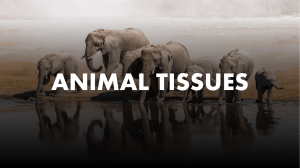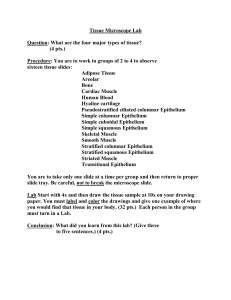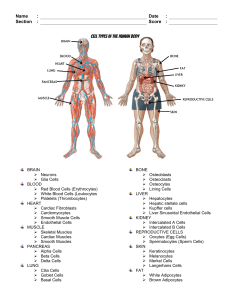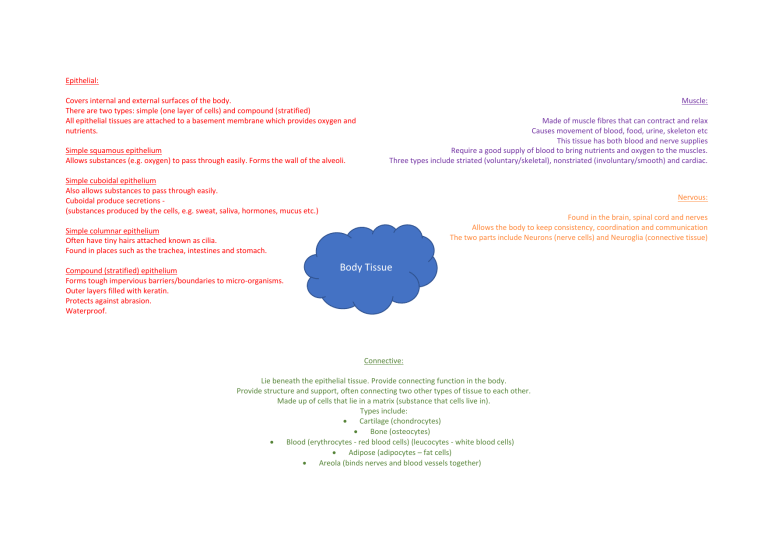
Epithelial: Covers internal and external surfaces of the body. There are two types: simple (one layer of cells) and compound (stratified) All epithelial tissues are attached to a basement membrane which provides oxygen and nutrients. Simple squamous epithelium Allows substances (e.g. oxygen) to pass through easily. Forms the wall of the alveoli. Muscle: Made of muscle fibres that can contract and relax Causes movement of blood, food, urine, skeleton etc This tissue has both blood and nerve supplies Require a good supply of blood to bring nutrients and oxygen to the muscles. Three types include striated (voluntary/skeletal), nonstriated (involuntary/smooth) and cardiac. Simple cuboidal epithelium Also allows substances to pass through easily. Cuboidal produce secretions (substances produced by the cells, e.g. sweat, saliva, hormones, mucus etc.) Nervous: Found in the brain, spinal cord and nerves Allows the body to keep consistency, coordination and communication The two parts include Neurons (nerve cells) and Neuroglia (connective tissue) Simple columnar epithelium Often have tiny hairs attached known as cilia. Found in places such as the trachea, intestines and stomach. Compound (stratified) epithelium Forms tough impervious barriers/boundaries to micro-organisms. Outer layers filled with keratin. Protects against abrasion. Waterproof. Body Tissue Connective: Lie beneath the epithelial tissue. Provide connecting function in the body. Provide structure and support, often connecting two other types of tissue to each other. Made up of cells that lie in a matrix (substance that cells live in). Types include: Cartilage (chondrocytes) Bone (osteocytes) Blood (erythrocytes - red blood cells) (leucocytes - white blood cells) Adipose (adipocytes – fat cells) Areola (binds nerves and blood vessels together)

